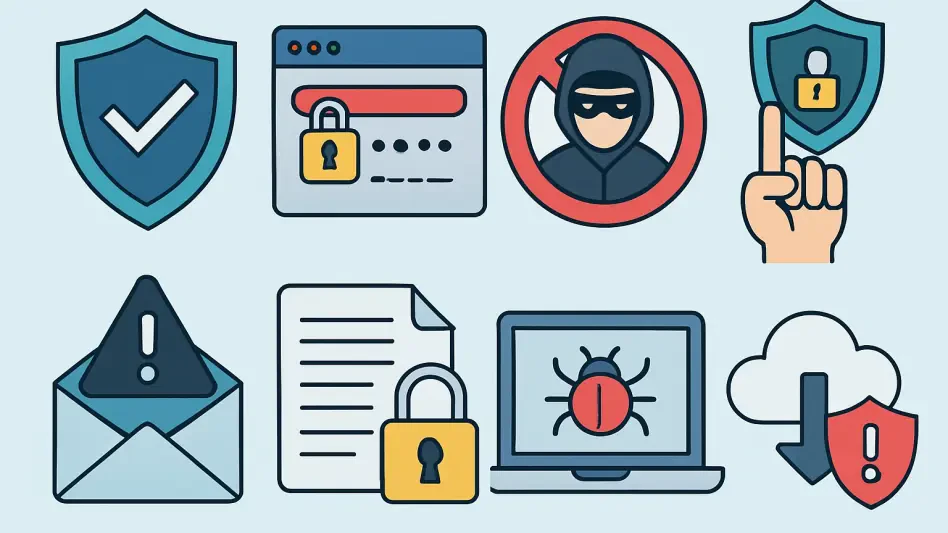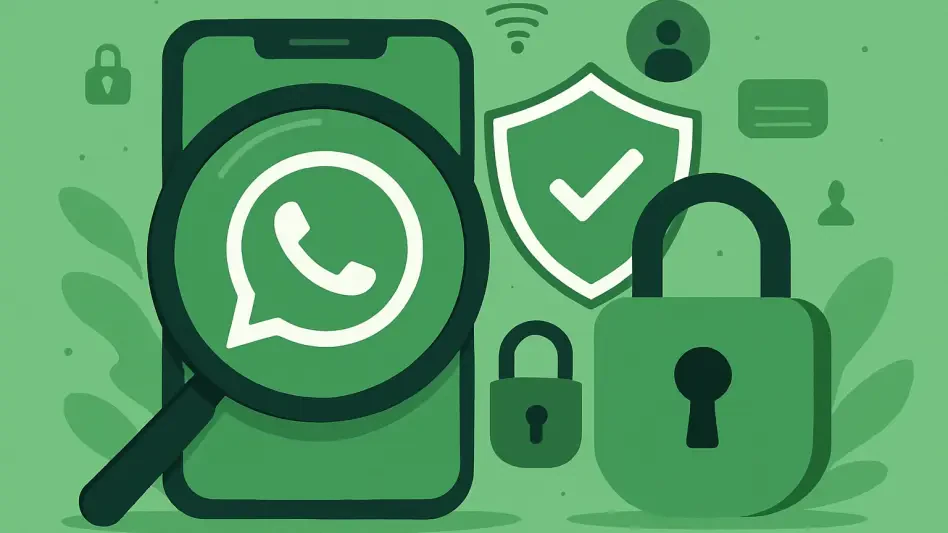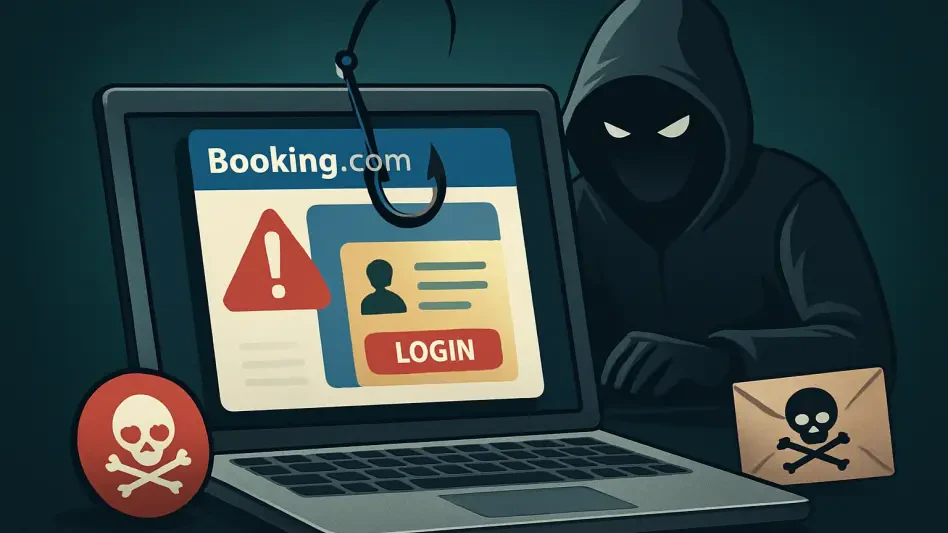Online scams are becoming increasingly sophisticated, posing a significant threat to internet users, particularly students. With the digital landscape constantly evolving, it’s crucial to stay informed and adopt proactive measures to safeguard personal information. From phishing scams to data tracking through cookies, and the necessity of robust password security to the dangers of free downloads, this article outlines essential tips and tools to help you navigate the complexities of the digital world safely.
The Growing Threat of Phishing Scams
Phishing scams are a major concern, especially for students who spend a substantial amount of time online. These scams often appear as legitimate emails or messages, tricking users into divulging sensitive information. The story of Braeden Riley, a student who fell victim to such a scam, highlights how even the most vigilant can be deceived. His experience underscores the importance of hesitancy and verification when confronted with unexpected online requests. Cybersecurity experts emphasize that users should always scrutinize the sender’s email address and look for subtle discrepancies that may indicate a phishing attempt. Furthermore, multi-factor authentication adds an extra layer of security, making it harder for scammers to gain unauthorized access.
Educational institutions often offer IT support services specifically designed to help students navigate these threats. Utilizing these resources can provide additional guidance and protection against phishing attempts. Students are encouraged to report any suspicious emails or messages to their university’s IT desk promptly. This collaborative approach helps in identifying broader phishing trends and developing more effective prevention strategies.
Tracking Technologies and Online Privacy
Data tracking through cookies is another area of concern for online users. Websites often use cookies to monitor user behavior, creating targeted advertising profiles. While this practice is common, it raises significant privacy issues. Users need to understand how their data is collected, used, and potentially sold. Privacy policies on websites often include detailed information about data tracking, but these documents are typically long and complicated. Experts advise taking the time to read and comprehend these policies, focusing on key terms related to data collection and usage. Tools like Privacy Badger can significantly minimize unwanted tracking by blocking trackers that advertisers use to monitor online behavior.
In addition to using tracking prevention tools, regularly clearing browser cookies and history can further protect privacy. Students are advised to disable third-party cookies and use private browsing modes when necessary. Understanding and managing cookie settings on different websites can prevent the accumulation of personal data, which advertisers exploit for targeted marketing campaigns. Greater awareness and careful management of digital footprints are crucial in maintaining online privacy in an era where data is a highly valued commodity.
Strengthening Password Security
One effective way to enhance cybersecurity is by using strong, unique passwords for different accounts. The practice of reusing passwords across multiple platforms significantly increases the risk of unauthorized access. Password managers are invaluable tools that can help generate and store complex passwords, ensuring that users do not have to remember each one. Cybersecurity experts highlight the importance of using a combination of upper and lower case letters, numbers, and special characters to create robust passwords. Jazmin Bravo, a grad student majoring in cybersecurity, shares her strategy of using a password manager to handle her numerous accounts efficiently.
In addition to using password managers, enabling multi-factor authentication (MFA) for online accounts adds a critical layer of security. MFA typically involves a second form of identification, such as a fingerprint or a code sent to a mobile device, making unauthorized access significantly more difficult. Bravo also points out that regularly updating passwords and avoiding easily guessable information like birthdays or pet names can further mitigate risks. Collectively, these practices form a solid defense against hacking attempts and ensure the protection of sensitive information.
The Risks of Free Download Links
Free download links can be enticing but often come with hidden dangers. These links may introduce malware that compromises not just personal devices, but also institutional networks. Malware can lead to data breaches, leaking sensitive information, or even rendering devices inoperable. The allure of free software, movies, or music often blinds users to the potential risks involved. Cybersecurity advisors recommend downloading software only from reputable sources and always checking reviews and ratings before proceeding.
Students should be especially vigilant about peer-to-peer (P2P) sharing platforms, as these are common avenues for distributing malicious software. When encountering a suspicious link, the best course of action is to avoid it and report it to the university’s IT support team. Institutions often have protocols in place for evaluating and dealing with potentially harmful software. By leveraging these institutional resources, students can help prevent the spread of malware and protect both personal and institutional data from malicious threats.
Utilizing Institutional Support and Resources
Universities provide valuable IT support services that can assist in identifying and mitigating online threats. This final segment focuses on the essential role of institutional resources in maintaining cybersecurity. Engaging with these support structures not only helps students resolve immediate issues but also contributes to a broader culture of security awareness and responsiveness. IT departments regularly update their systems and protocols to counter emerging threats, and staying informed about these updates is crucial for students and faculty alike.
IT support teams are equipped to conduct workshops and training sessions, offering practical knowledge and skills for recognizing and avoiding online scams. These educational initiatives are vital in empowering students to navigate the digital landscape safely. By collaborating with institutional support and actively participating in cybersecurity programs, students can significantly enhance their understanding and application of safety measures in the digital realm.
Proactive Measures for a Safer Digital Future
Online scams have become increasingly advanced, posing a serious threat to internet users, particularly students. As the digital landscape continues to evolve, staying informed and taking proactive steps to protect personal information has never been more crucial. Scammers employ various tactics, from phishing schemes designed to steal sensitive data to tracking cookies that monitor your online behavior. Ensuring robust password security is essential, as weak passwords can easily be exploited. Additionally, the allure of free downloads often conceals hidden dangers, such as malware or spyware that can compromise your device. This article highlights critical tips and tools to help you navigate the digital world safely. It’s vital to be aware of these threats and practice safe browsing habits, such as using multi-factor authentication, regularly updating software, and being cautious of suspicious links and emails. By staying informed and cautious, you can better protect your personal information from digital threats.








